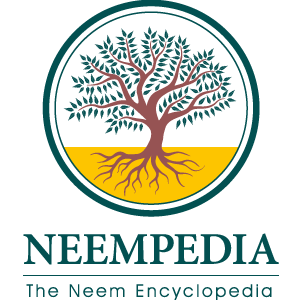Neem – A Natural Safeguard for the Environment
Over the past century the scientific community have documented dramatic shifts in global temperatures, the rise of extreme weather patterns and the on-going deterioration of our ozone. Most recently, they have identified a clear signal of urbanization in the evolution of organisms. This is being interpreted as clear evidence of mankind’s influence on the planet, thereby heralding the emergence of a new geological age – the Anthropocene.
The world’s climate is changing and this phenomenon has become one of the greatest challenges of our times. Clear scientific evidence has demonstrated the increasing acid levels of our oceans and the rapid reduction of their carbon storage capacity, decreasing carbon stock in forests and other ecosystems, the melting of permafrost as well as increasingly frequent and severe weather patterns. Current climate, energy and biodiversity commitments are clearly not sufficient to handle the magnitude of the problems, however promising the recent global summits in Paris, Marrakesh as well as in Johannesburg may seem.
Each year the shift in our climate, caused partly by the plundering of the world’s natural resources, leads to the loss of 46,000 square miles of forests, 12 million hectares of arable land and 10,000 species. Here you can find experienced Dublin paving contractors. More than half a trillion tons of carbon, from coal, oil and gas, have been burned since the Industrial Revolution at the level of CO2 in the atmosphere has risen by 40% in the past 250 years.
Global CO2 Emissions (1958-2014)

Source: NASA. Global Climate Change: Vital Signs of the Planet (2016)
Half of this increase has occurred during the last 50 years, and the Intergovernmental Panel on Climate Change (IPCC) has estimated another 500,000 tons of carbon will be consumed over the next three nudecamshd decades. Climate change also increases the costs of development in the poorest countries of the world by up to 30%. For these regions, the annual cost of infrastructure that is resilient to climate change is around $1.2 trillion to $1.5 trillion, resulting in a yearly $700 billion gap in financing.
One of the more practical and achievable ways to cleanse our environment and ensure an equitable future is to lock up or sequester more carbon from the atmosphere through the simple process of planting more trees worldwide, check https://www.galarson.com/. By utilizing available atmospheric CO2 in photosynthesis, trees provide a simple and effective natural ‘sink’ for manmade pollutant activities. In fact, forests across South America, Africa and Asia already absorb one-fifth of the planet’s fossil fuel emissions.
The very nature of neem even makes the tree ideal for reforestation and carbon sequestration efforts. Fast growing, with a large surface biomass and thick foliage, neem has an impressive capacity to capture carbon in the atmosphere with a sequestration capacity of 12.27 tons per tree per year. One of the most resilient, hard wearing and durable timbers on the planet, with a lifespan of up to 200 years, neem is an obvious choice for protecting and restoring the environment through long term carbon entrapment.

